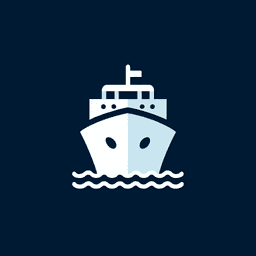
Bow: Definition, Types, and Uses Explained
January 16, 2025
Bow
The term "bow" refers to the forward part of a ship or boat, the area that usually cuts through the water. It is a crucial component in maritime navigation and design, as it affects the vessel's hydrodynamics and overall performance at sea.
In maritime contexts, the bow is designed to minimize resistance and improve the ship's ability to move efficiently through water. The shape and structure of the bow can vary significantly depending on the type of vessel and its intended use. For instance, a sharp, narrow bow is often found on speedboats and racing yachts to enhance speed, while a broader, more rounded bow might be used on cargo ships to maximize stability and cargo capacity.
Understanding the bow's role is essential for sailors, as it influences the handling and maneuverability of the vessel. The bow's design can also impact the safety of the ship, particularly in rough seas, where a well-designed bow can help prevent waves from washing over the deck.
Additionally, the bow is often equipped with various navigational aids and equipment, such as anchors, bow thrusters, and sometimes sonar systems, which assist in docking and maneuvering in tight spaces.
Overall, the bow is a fundamental aspect of maritime architecture, playing a vital role in the vessel's performance, safety, and operational efficiency.
Understanding the Bow in Maritime Context
The bow is a crucial part of any watercraft, whether it's a ship or a boat. It is the forward part of the hull, which is typically the most forward point when the vessel is underway. The bow's design is essential for cutting through water, reducing drag, and ensuring smooth navigation.
People Also Ask
What is the difference between a bow and a stern?
The bow is the front part of a boat, while the stern is the rear. When facing the bow, the left side is known as the port side, and the right side is the starboard side. This terminology is crucial for navigation and communication on the water.
What is the correct definition of a boat's waterline?
The waterline is the point on the hull of a ship or boat to which the water rises. It is a critical reference for determining the vessel's buoyancy and stability. The waterline can also be marked on the outside of the ship, corresponding with the water's surface when the ship is afloat on an even keel under specified loading conditions.
What is the difference between a bow and a prow?
While the terms are often used interchangeably, the prow specifically refers to the forward-most part of the bow above the waterline. The bow encompasses the entire front section of the ship, including the prow.
Why do they call it the bow?
The term "bow" originates from the Middle Dutch word 'boech,' which refers to the front part of the ship. It is the point that is usually most forward when the vessel is underway, playing a vital role in navigation and hydrodynamics.
Understanding these terms and their distinctions is essential for anyone involved in maritime activities, ensuring effective communication and safe navigation.




